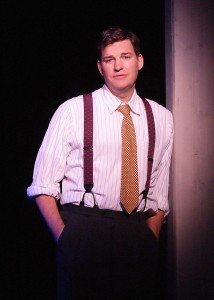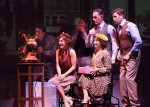Writer Dean McClure was watching his daughter perform in a parade at Disneyland 20 years ago when he asked himself why a musical had never been made to highlight the life of Walt Disney.
On Friday, the musical “When You Wish: The Story of Walt Disney,” presented by McClure and Pat Boone, opened at UCLA’s very own Freud Playhouse – it will be playing until Nov. 3.
The musical, written by McClure, closely follows the life of Disney and how he became the world icon that he is perceived as now.

“As actors, doors get slammed in your face left and right, but that doesn’t stop you if you believe in yourself,” Gleason said. “Walt should have failed so many times, but he didn’t fail and I think that’s a life lesson for everyone.”
The fact that the world premiere of “When You Wish” is taking place in Los Angeles, sometimes referred to as “Disney’s backyard,” juxtaposes the opening of the original production with what Gleason said to be Los Angeles’s dream-making ideology.
“This is the land of dreams and it’s cool to be doing it here because this is where it all happened,” Gleason said. “People come to L.A. to make their dreams come true and this show is all about making your dreams come true.”
As an original work, the show underwent many changes during the rehearsal process, particularly when choreographer Lee Martino, who teaches third- and fourth-year musical theater students dance for musical theater at UCLA, joined the creative team.
Lee, in collaboration with the musical’s director Larry Raben, had the responsibility of incorporating iconic Disney elements. Because the production is unaffiliated with The Walt Disney Company, the musical does not include any actual Disney images in an effort to avoid copyright infringement.
“We’ve had to go around everything and suggest things and do a lot of creative thinking in terms of making the production numbers,” Martino said. “We’re talking about Walt’s life and how he came to things rather than his end result, so it’s more about the process he used, how (he came) to create Mickey Mouse, rather than the end result.”
Martino said that in a number called “Mickey Who?” the creative team tackled this exact challenge by showing a bunch of executives looking at pictures of the mouse in the musical and expressing their doubts rather than actually showing images of Mickey Mouse.
“I also took dancers and had the animators come out and draw them during the show. On the screen you see sketching,” Martino said. “The dancers come out and pretend to be Pinocchio and Cinderella for the animators. For those things we don’t dress them up like the Disney characters; I embody them in the movements.”
A huge amount of dramaturgy of Disney’s life went into the creation of “When You Wish” on the part of writer and lyricist McClure.
“He knows a lot about these people,” said the show’s production manager Robert Rudolph, a 2006 graduate of the UCLA School of Theater, Film, and Television.
“There was actually this amazing moment in a production meeting when we were going through some photos of the costumes of the period, and our costume designer had picked up a bunch of photos of the animators. Dean would lean over and name the animators, all of them, including people you’d never heard of.”
McClure contacted Roy Disney Jr. and Disney’s daughter, Diane Disney Miller, who gave McClure her blessing to go along with the piece as long as he was kind to her father, which Rudolph said he was.
“It’s a very sweet tale about a man who everybody knows,” Rudolph said. “We’ve all heard of him, we’ve all heard his legacy, we just don’t know much about him, and that’s what the show is basically telling us.”
